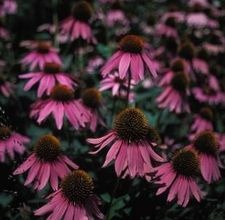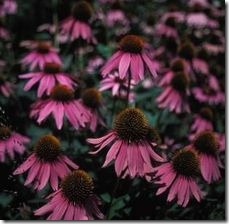Coneflowers are native to North America, and relatives of the common daisy. Since daisies are cheerfully ubiquitous flowers, their relatives, the coneflower, should be–and are–easy to grow using a few simple pointers. Another name for the purple coneflower is Echinacea purpurea. While most coneflowers are purple, they are available in a wide range of colors, including white, yellow, pale- and deep-pink, and orange. White, yellow and orange coneflowers may not propagate as easily as purple coneflowers.
- Difficulty:
- Moderately Easy
Instructions
things you’ll need:
- Garden trowel or small shovel Compost or peat moss
- Choose a dryish, sunny spot in your garden and plant your coneflowers in the spring, after all danger of frost has passed. Coneflowers prefer soil with good drainage, exposure to full or partial sun, and room to grow and multiply. Avoid heavy, clay soil, or soil that is constantly damp.
- Plant your coneflowers on a cloudy day, or late in the afternoon. It’s enough of a trauma for the coneflower to be transplanted, but planting it during the noonday sun adds to the plant’s total recovery time.
- Dig a hole approximately 12 inches deep, and wide enough to easily accommodate the new plant. Crumble and aerate the soil, removing debris, weeds and rocks as you go. Add compost or peat moss to the soil. This will help the soil retain moisture and enrich it with nutrients from the organic matter.
- Tap the purchased coneflower from its pot. If the plant is root-bound and won’t slide easily out of the pot, squeeze the sides of the plastic pot, turning and squeezing the pot as you do. A final tap on the bottom of the pot is usually enough for the plant to slide out of the container. Gently loosen and untangle the roots of the unbound coneflower.
- Place the plant into the hole so that the top of soil section of the coneflower is level with the ground. Fill the hole with the excavated soil and tamp firmly around the base of the plant. Give the newly-planted coneflower a generous dosing of water. If you want to plant more than one coneflower in the same area, leave 12 inches between each plant.
- As winter approaches, leave a few old, dried flower heads on the plant, as coneflowers will reseed. Carefully transplant new seedlings that appear the following spring into another area of your garden.
Tips & Warnings
-
The roots of coneflowers have been used medicinally for centuries by Native Americans for their immunity-boosting effects. However, limited use of echinacea is advisable, as long-term use decreases it effectiveness.


Deprecated: strpos(): Passing null to parameter #1 ($haystack) of type string is deprecated in /home/agriviek8Qv/agriviet.net/public_html/wp-includes/comment-template.php on line 2522